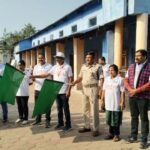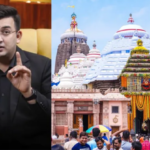Dharavi – A Human-Centric Transformation
‘After we are done, if Mike Tyson does visit Dharavi again, he may not be able to recognise the Dharavi he saw earlier’
By Gautam Adani
On his bucket list, former world heavyweight boxing champion Mike Tyson listed two places in India that he wished to visit: one was the Taj Mahal and the other was Dharavi.
My first tryst with Dharavi was in the late 1970s. New to Mumbai, I was just another anonymous youngster lured to the big city by opportunity and my own optimism that I would sparkle in the diamond trade. Even back then, Dharavi was a melting pot of an array of beliefs, cultures and languages from every part of India. I was mesmerised by the industrious chaos that I saw in Dharavi’s alleys, where just about every Indian language seemed to echo with equal urgency. But there was order in that chaos, seemingly provided by the soul of Dharavi. I could never define it but felt it very strongly.
That visit to Dharavi was both humbling and disturbing. The community’s struggle for survival, laced with equanimity and happiness, inspired me. However, it also burned a question into my mind: Will their fate ever change?
My amazement is no less today. Seeing Dharavi sprawled out like a giant human quilt below the landing approach to Mumbai Airport is not only a reminder of stoic human adaptation and Mumbai’s capacity to embrace settlers of contrastive origins but also a grim reminder of a community living in urban squalor, forever waiting for its revival.
Against this backdrop, when this opportunity to renew Dharavi came calling, I seized it with both hands. I eagerly wanted to do it as it had a huge personal connection with my first impression of Mumbai. Perhaps, it was because of this overzealousness that our bid was 2.5 times the next highest.
A new chapter of pride and purpose is beginning. It is a historic opportunity for us to create a new Dharavi of dignity, safety and inclusiveness.
As we embark on this completely uncharted journey, I am aware of the colossal challenges ahead. Even in comparison with Singapore’s trailblazing project to resolve its housing crisis in the 1960s, Dharavi is a unique project in a league of its own for three reasons:
Firstly, it is one of the world’s largest urban resettlement and regeneration projects. Approximately a million people will be rehabilitated and resettled.
Secondly, rehabilitation entails the resettlement of not only the residential units but also of diverse establishments of various sizes and scales dealing with trading, shopping and other business transactions. The entire ecosphere and business fabric of diverse and distinct trades thriving in Dharavi will be rehabilitated and rehoused.
Thirdly, the project will aim for comprehensive and holistic redevelopment as it caters to the housing and rehabilitation needs of both eligible and ineligible residents.
While I have no fixed ideas or preconceived notions about redeveloping Dharavi, what I do have are good intent and an iron will for a human-centric transformation with the people of Dharavi at its centre. It will be a bottom-up project reflecting their views and sentiments to the maximum extent possible. We will create an institutionalised mechanism to capture the sentiments of not only the people of Dharavi but also of the finest brains and each and every caring Mumbaikar, who are equal stakeholders in this journey of transforming Dharavi. The new Dharavi will reflect the quintessential character of Mumbai – the spirit, grit, unity in diversity, colour and determination – without losing the timeless essence of the old Dharavi.
We will also create a state-of-the-art world-class city, which will reflect a resurgent, self-assured, growing India finding its new place on the global stage as the 21st century belongs to India.
It is also my personal commitment that the only move the eligible residents of Dharavi will make will be to their new homes. Not only will they see their homes being constructed in front of their eyes but they will also have a say in shaping it. What their homes do not have now, we will provide – gas, water, electricity, sanitation and drainage, healthcare and recreational facilities, and open spaces – and they will also have access to a world-class hospital and a school. Gone, like a faded memory, will be the pain of inadequacy. In its place will be a new Dharavi that hums with pride.
Apart from resettlement, livelihood is a big challenge. I intend to transform Dharavi into a modern city hub by looking at ways and means to support and strengthen existing micro enterprises and small industries and by promoting new age jobs with a special focus on youth and women. This will be achieved using a multi-pronged strategy with the help of sectoral experts and civil society. It could be a combination of training centres focused on up-skilling, common facility centres for product-based as well as service-based entrepreneurship models, R&D centres, data centres, MSME help desks, etc. Another important element could be the creation of organised and systemic marketplaces in line with the Open Network for Digital Commerce (ONDC).
The effort to transform Dharavi is not new but has a long history of nearly half a century. This time, some smart changes in the tender design based on earlier learnings ensured bidders’ participation and its successful completion. For example, this tender catered to the rehabilitation of ineligible tenants. Further, the inclusion of 45 acres of railway land adjacent to Dharavi facilitates in-situ resettlement and day-zero project commencement.
It is important to mention that this project would not have seen the light of day but for the unflinching support and commitment of the successive state governments and political parties of Maharashtra coupled with the present central government which provided railway land.
My team and I are aware that the design and implementation of the Dharavi project are challenges monumental in both scale and dimensions. We are also aware that the project will test our resilience, our capability and our execution skills to their limits. Over the years, the Adani Group has developed a solution-oriented culture backed by a highly motivated, experienced and energetic team. I am confident that, with the support of all stakeholders, we shall create history and make Dharavi, Mumbai and India proud.
After we are done, if Mike Tyson does visit Dharavi again, he may not be able to recognise the Dharavi he saw earlier but I am sure that he will still find its soul as spirited and alive as ever. God willing, the likes of Danny Boyle will discover that the new Dharavi is producing millionaires without the slumdog prefix.
(The author is Chairman of the Adani Group.)





